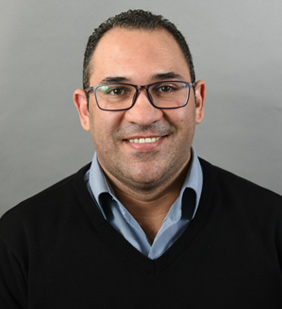
Mohamed Amine Gharbi
Area of Expertise
Active matter, Assembly of functional nanomaterials and biologically based soft materials, Interfacial phenomena, Colloids, Liquid crystals, Data science
Degrees
PhD, Physics of Condensed Matter, University of Montpellier, France
Professional Publications & Contributions
- Hierarchical assembly of smectic liquid crystal defects at undulated interfaces
- Elastocapillary driven assembly of particles at free-standing smectic-A films
- Reversible Nanoparticle Cubic Lattices in Blue Phase Liquid Crystals
- Fine Golden Rings: Tunable Surface Plasmon Resonance From Assembled Nanorods in Topological Defects of liquid Crystals
- Smectic Gardening on Curved Landscapes
- Capillary induced giant elastic dipoles in thin nematic films
- Elastocapillary interactions on nematic films
- One-step Assembly of a (reconfigurable) Smectic Liquid Crystal 'Compound Eye' on a Curved Interface
- Controlling liquid crystal defects
- Focal conic flower textures at curved interfaces
- Exploiting imperfections in the bulk to direct assembly of surface colloids
- Capillary force on a sphere trapped at a fluid interface of arbitrary shape
- Microparticles confined to a nematic liquid crystal shell
- Behavior of colloidal particles at an air nematic liquid crystal interface
Additional Information
Directed self-assembly of biomaterials and functional nanomaterials in soft condensed matter provides a fascinating tool for producing a new generation of advanced materials that combine several properties and may respond to external conditions. The goal of Mohamed Gharbi's research is to develop new mechanisms of directed assembly and combine these tools with functional nanomaterials to generate multi-functional hybrid systems with unique properties. By exploiting these fundamental insights, and using colloidal buildings blocks of various levels of complexity, he explores the possibility of creating a variety of reconfigurable structures with rich properties. The study of these systems will offer important insights for the design of novel "smart" applications, including biochemical sensors, self-assembled microrobots, displays, microlens arrays, photonic nanomaterials and optoelectronic devices.
